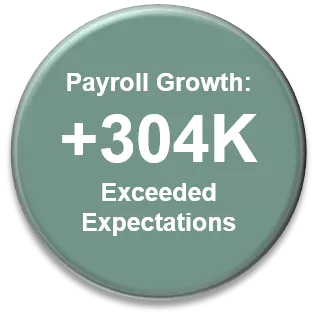Economic Commentary on January 2019 Employment Report
By John Beuerlein, chief economist, Pohlad Companies

Chief Economist
Pohlad Companies
What a difference a month makes. After closing out 2018 with U.S. equity markets experiencing the worst December performance since the Great Depression amid concerns that the current Federal Reserve’s monetary policy was tone-deaf to the slowing growth in the world economy, the Fed removed all mention of rate increases from their communication after their January meeting and said the “Committee will be patient” in determining future adjustments to interest rates. One of the results of this apparent change in course of near-term monetary policy was for U.S. equity markets to post the best January performance in 30 years.
How long the Fed remains on hold with policy classified as “accommodative” will be determined by incoming data. The regular cadence of economic data that I typically comment on has been interrupted over the past month due to the government shutdown and the closure of several key departments that gather and report data.

One report that was not impacted by the government shutdown was the employment report for the month of January. Reported on schedule on February 1, the Labor Department said that payroll growth in January exceeded all forecasts (+304,000), wage gains eased slightly, and the unemployment rate edged up to 4.0% from 3.9%.
The Labor Department found “no discernible impacts” of the shutdown on the January reported levels of employment, hours, or earnings.
With year-over-year hourly wage gains growing at 3.2% and the recently released Employment Cost Index growing at 2.9%, the uptrend in wage pressures continues to mount but is still sufficiently moderate to prevent Fed officials from worrying that they are at risk of falling behind the inflation curve.
In short, the labor market remains on solid footing.
Inflation Is Key
If the employment landscape remains healthy in the U.S., inflation expectations will be the driver of how aggressively the Fed raises interest rates in 2019.
The biggest determinant of long-term interest rates is inflation and inflationary expectations, which remain subdued. During 4Q-18, inflationary expectations declined because of concerns about global economic growth and the 35% decline in oil prices. With commodity prices and labor costs as two of the biggest drivers of inflationary pressures, it is difficult to see increased inflationary pressures without participation from these components – neither are currently strengthening at rates that would generate significant inflationary pressures. The result is that long-term interest rates are likely to remain lower for longer.
Looking into 2019, although the U.S. economic landscape is holding firm for now, there are signs that a transition to slower growth may be developing. Accommodative monetary policy will be offset by the fading impact of the 2017 tax cuts, ongoing trade tensions, and cooling of global economic growth. Expect U.S. real GDP in 2019 to slow from 3.2% in 2018 to 2.4% in 2019.
Economic cycles typically end with excesses such as significant wage pressures, high inflation, or elevated interest rates. We are not there yet. In the meantime, U.S. economic vibrancy will be directly linked to the resilience of consumers – and therefore the labor market – for the foreseeable future. A healthy labor market, then, will help to keep recession risks low. The Fed’s challenge is to raise rates at a pace that keeps inflationary pressures in check without causing negative consequences on the labor market – in other words, create a soft landing.
Insights
Research to help you make knowledgeable investment decisions